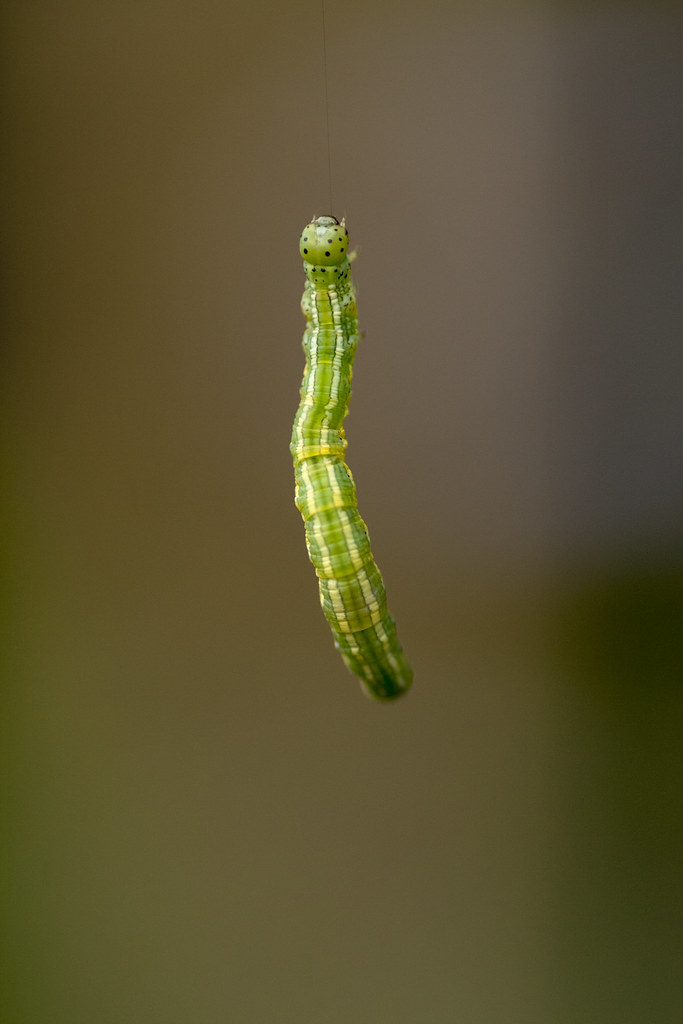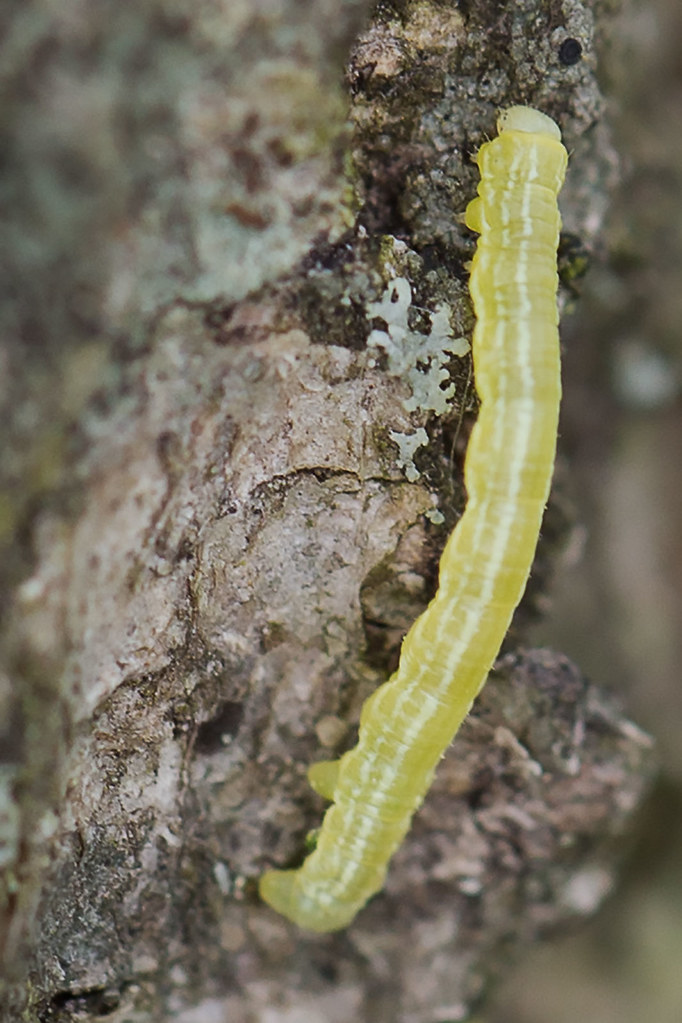 |
| Photo Credit : D. Garding |
I first discovered the importance of inchworms in trout
fishing last May. I was fishing a sea-run brook trout stream where the trout
take streamers almost exclusively. On this particular day, however, I didn’t
get a single strike on my go-to brookie streamer, the Mickey Finn. I decided to
try a black wooly bugger instead.
I cast the wooly bugger into a pool and it was met with a
sudden rise.
Too sudden.
The Wooly Bugger’s magic lies in the lifelike motion of its
marabou tail. But this fish struck long before it would have had time to see
any motion in the tail. I got the fish in, still confused as to why the trout
struck so quickly, but happy to catch a fish. After all, it doesn’t matter to
me why a fish strikes.
When I looked into its mouth to remove the fly, it
immediately became clear why the trout struck on the surface. Three bright
green inchworms were lodged in its throat.
 |
| Photo Credit: David Illig |
For the next two weeks I paid close attention to inch worms
every time I fished. I noticed a few characteristics that make inchworms good
flies to try:
Where there’s one, there are many
Inchworms are the caterpillars of
Geometer Moths, a widely distributed family containing over 35,000 species. These
caterpillars congregate on their preferred tree species, so you’ll
typically find many individuals in a small area.
They’re clumsy
Inchworms often fall out of trees.
When they fall, they suspend themselves on a thin piece of silk, but they
don’t seem to have the strength to pull themselves back up. This means you will
often see an inch worm drop slowly towards the surface of the water from an
overhanging branch. The fish can see this too, so they have plenty of time to
set up below the falling worm and wait for it to hit the water. I’ve even seen
a bluegill clear the water to grab an inchworm that hadn’t yet hit the surface.
They float
Inch worms float high on the
surface, and I’ve never seen one drift long enough to sink without being eaten.
Everyone likes fishing dries, and with inch worms active in the middle of the
day, there is a rare opportunity for midday dry fly fishing.
For some reason, inchworm flies are not common. Maybe its
because they’re considered “Junk Flies” like eggs and San Juan worms, or maybe
people just don’t realize trout eat them. Whatever the reason, a lot of people
are missing out. My black wooly bugger worked, but it isn’t the best imitation
and likely wouldn’t work on selective fish. After that outing I bought some
greenie weenies, and they worked, but they don’t float and most fish were
taking worms from the surface. If any fly-tiers want to come up with their own
pattern, I think a floating foam fly would work perfectly.
Last year the inchworms were peaking in MA in mid-may, but
this year’s long winter might push that back a few weeks. Be on the lookout for
these little green guys this spring and you might find a great day of fishing!

No comments:
Post a Comment